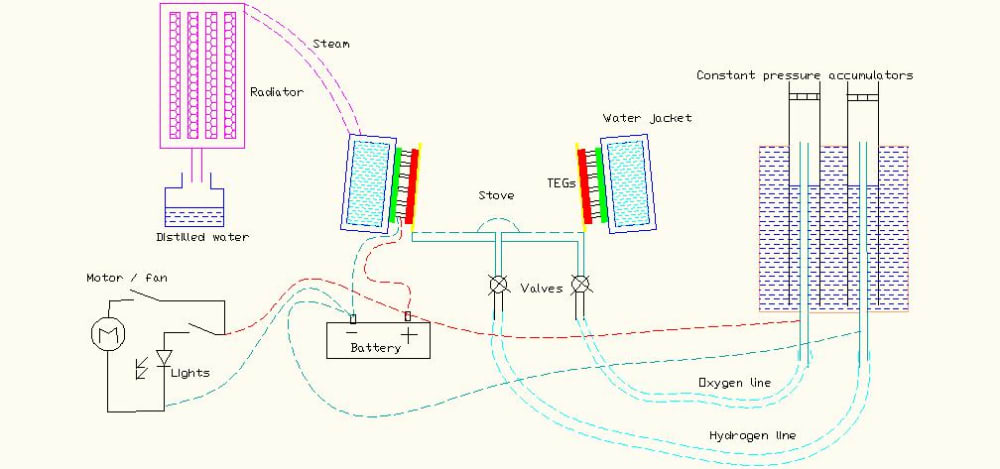Scientists throughout the world are looking for alternate and renewable energy sources due to the rapid decline in fossil fuel deposits. Global warming due to CO2 emmissions from burning hydrocarbons has alarmed some industrialized nations to impose new regulations and taxes to control CO2 production.
It is necessary to maximize the efficiency of energy use in every application untill new energy sources are found. The description below explains the operating priciple of "Jayanada Stove" that recovers part of the energy radiated or wasted from fireplaces. (The same principle can be used to recover thermal energy from exhaust pipes of staionary engines and furnaces, etc.)
ThermoElectric Generators (TEGs) produce Direct Current (DC) and voltage depending on the temperature difference between the two sides of them. These TEGs are mounted on the outer surface of a short conical pipe made of thin stainless steel sheet or a thicker, heat conductive, corrosion resistant material. The outer surfaces of TEGs are in contact with a water jacket. When the unit is kept around the source of thermal energy (wood fired stove, gas cooker, electric grill etc.) radiated heat elevates the temperature of the TEGs' hot sides while the cool sides are below 100 Deg C, due to the presence of a water jacket. TEGs are wired in series to increase output voltage and in parallel to increase current.
Heat passing through TEGs boils water in the water jacket and produces steam. This steam is condensed using a radiator to produce distilled water, which can be used in many applications.
This DC electrical energy can be stored in rechargeable batteries for operating fans, lights and computer power backup systems. How ever, after the batteries are fully charged, harnessed energy is wasted. The system becomes inefficient.
In the "Jayanada Stove" firewood or coal is burned to produce heat. Electrical energy produced from TEGs around the stove is used to electrolyze salt water and produce Hydrogen and Oxygen. These gasses are stored separately outside the household in constant pressure accumulators. The Hydrogen gas is sent to the middle of the stove through a valve to produce a starter fire. (Hydrogen can be allowed to burn continuously as a secondary fire in gas cookers those use LP gas or natural gas as the source of fuel.) Oxygen is also sent to the bottom of the stove, seperately, to enhance burning of fuel. The amounts of soot (unburnt carbon) and toxic gases such as CO produced from the stove are reduced. Therefore, "Jayanada Stove" reduces enviornmental pollution while producing thermal energy.
Even though the contribution from one unit is small, it can create a huge impact if the units are used by a large portion of the world population. The TEGs can be produced at low cost as the semiconductor technology is developing rapidly.
Since this idea can help to fight global warming and greenhouse effects, all those who read this article will vote for it, I believe.
Dr. D.N. Jayatissa
Like this entry?
-
About the Entrant
- Name:Dangallage N Jayatissa
- Type of entry:individual
- Software used for this entry:DraftSight
- Patent status:pending

